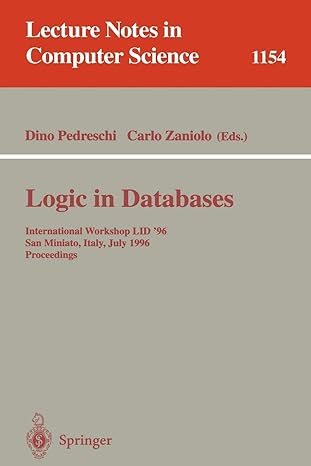Question
In this assignment AUCTIONBASE I need to provide a deliverable , I tried with no luck. Unfortunately with remote learning. It is so difficult to
In this assignment AUCTIONBASE I need to provide a deliverable, I tried with no luck. Unfortunately with remote learning. It is so difficult to understand the following. The teacher is moving too quickly. I want to know the following and understand it. It's so important to me to understand can you help with detailed answers PLEASE? Thank you!
In this project, we are developing an online e-commerce website (similar to eBay). You are implementing a version of AuctionBase (which is based on an assignment from the University of Wisconsin). - User registers to the website (using a username, email, name, address, and phone number. ) Each user is identified by a unique id. - A user can be a buyer or a seller (or both). - A seller places items for Auction. - The item is identified by an ID and has a name and may belong to multiple categories, a location (which may be different from the seller location), and descriptions. -For each category, we keep track of its id, name, and description. -Auctions would have a start time, end time, and a starting asking price. - A buyer can bid on items, the bid with the highest bid win the auction. - A buyer may review the seller (a rating from 1 to 5) and write feedback. -
- The seller specifies the shipping options that may include pickup, each shipping option has a price and time. -The seller provides her bank information (bank name, routing number, and account no). - The system stores the payment information for credit card information( card number, expiration date, CCV code, name, and billing address). - The winner bidder specifies her choice of shipping method and has to pay for the price of bid and shipping cost. - The status of the buyer payment is recorded, upon the successful payment, the seller must ship the order within two business days. The tracking information (of shipment) is recorded, if applicable. The buyer confirms the delivery of the item. The payment is released to the seller after delivery is confirmed. - Each bid must be higher than the previous one. For each auction, we store the number of bids and the last price (this information is stored for performance).
To simulate the execution of the system, we create a table for the current time. This table should at all times contain a single row (i.e., a single value) representing the current time of your AuctionBase system.
Constraints for Users 1. No two users can share the same User ID. 2. All sellers and bidders must already exist as users. 3. The bidder must have a valid credit card
Constraints for Items 4. No two items can share the same Item ID. 5. Every bid must correspond to an actual item. 6. An item cannot belong to a particular category more than once. 7. The end time for an auction must always be after its start time. 8. The Current Price of an item must always match the Amount of the most recent bid for that item.
Constraints for Bidding 9. A user may not bid on an item he or she is also selling. 10. No auction may have two bids at the exact same time. 11. No auction may have a bid before its start time or after its end time. 12. No user can make a bid of the same amount to the same item more than once. 13. In every auction, the Number of Bids attribute corresponds to the actual number of bids for that particular item. 14. Any new bid for a particular item must have a higher amount than any of the previous bids for that particular item.
Constraints for Time 15. All new bids must be placed at the time which matches the current time of your AuctionBase system. 16. The current time of your AuctionBase system can only advance forward in time, not backward in time.
Deliverable
1. Design EERD schema for the system.
2. Create the Relation model in SQL
3. Design your constraints: Create a file called constraints.txt in this file, you will specify, in plain English, how you implemented each of the 16 constraints in your database schema, if possible.
4. Implement your Trigger constraints.
Step by Step Solution
There are 3 Steps involved in it
Step: 1

Get Instant Access to Expert-Tailored Solutions
See step-by-step solutions with expert insights and AI powered tools for academic success
Step: 2

Step: 3

Ace Your Homework with AI
Get the answers you need in no time with our AI-driven, step-by-step assistance
Get Started


